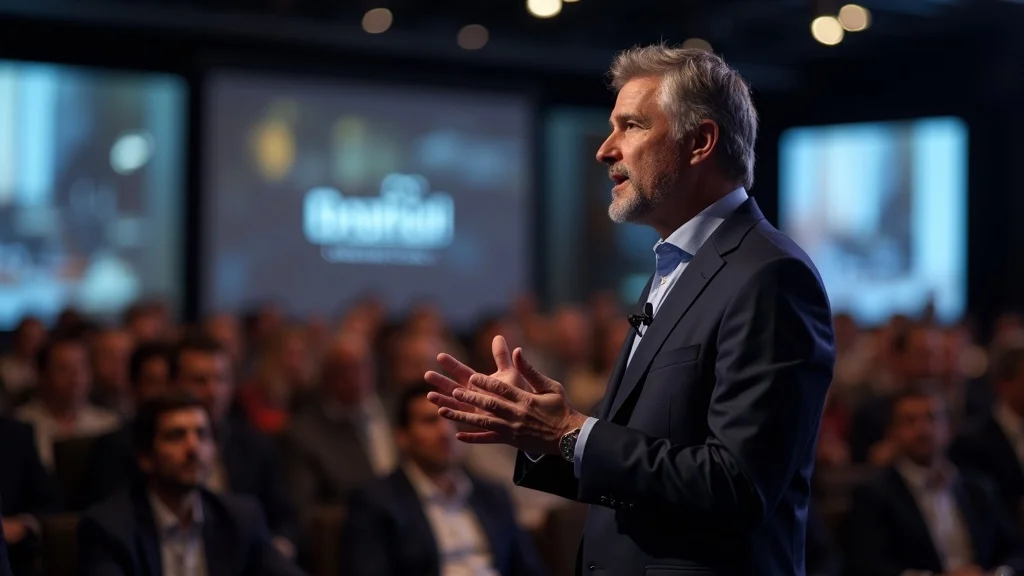Did you know that organizations with high internal trust outperform their peers by up to 300% in sustainable growth? The design-build coherence cascade isn’t just a new buzzword—it’s rewriting the economics of trust and showing a clear path from fragmentation to prosperity. In a digital world overflowing with noise, alignment and resonance are fast becoming the cornerstone of successful, future-facing organizations. Leaders, entrepreneurs, and innovators now face a simple but profound choice: continue the chaotic churn of disconnected strategy, or unlock the magic of coherence and set a new benchmark for value creation. This article boldly explores how the design-build coherence cascade acts as the ultimate organization operating system, ushering in an era where trust, reputation, and legacy are true currencies.

A Startling Shift: Why the Design-Build Coherence Cascade Matters in the Resonance Economy
Welcome to the Resonance Economy, where once-isolated roles of leadership, branding, operations, and finance converge around a higher order principle: coherence. The stakes have never been higher—high-trust environments driven by agent systems and feedback loops are now delivering magnitudes more value than fragmented, transactional companies. Research shows that internal alignment, measured by performance indicators and effective team meetings, far outpaces the productivity of “run-as-you-go” organizations. Imagine an enterprise where intent, trust, and action cascade effortlessly from visionary leaders to every team member, turning the entire system into a finely tuned, value-generating engine. This is the age where cascade design models, once reserved for architecture and information technology, are now blueprinting sustainable business growth. Fragmented strategies are quickly becoming a bad idea for forward-thinking enterprises. Instead, the law of coherence—reflecting unified purpose at every organizational level—helps organizations transform into models of vitality, resilience, and trust-driven prosperity.
Did you know that organizations with high internal trust outperform peers by up to 300% in sustainable growth? The design-build coherence cascade is rewriting the economics of trust.
What You’ll Learn About the Design-Build Coherence Cascade
- The Law of Coherence: why alignment builds organizational trust and value
- How the five layers of the design-build coherence cascade form a new blueprint for prosperity
- Real-world parallels between architectural design-build strategy and business growth models
- Why social capital is the vital bridge to financial capital
- A roadmap to implement resonance principles in your brand or enterprise
Understanding the Design-Build Coherence Cascade: Principles and Foundations
What is the Design-Build Coherence Cascade?
At its heart, the design-build coherence cascade is a layered strategic framework that aligns an organization’s energy, intent, team well-being, relationships, financial flows, and legacy goals into a single, actionable system—think of it as the ultimate agent system for your enterprise DNA. Instead of treating purpose, culture, and profit as separate entities, this approach weaves them together in a feedback loop, ensuring every decision and action amplifies its core component and overall value. Cascade design borrows from engineering’s best practices, shown in fig, but it elevates the idea: energy flows from “quantum” alignment (intent), through each organizational layer, manifesting as sustainable performance indicators and reputation. The result? A good fit between your enterprise’s underlying intent and its day-to-day actions—measured, monitored, and recalibrated across the entire system.

The Cascade Model of Strategy in the Context of Coherence
The cascade model of strategy refers to an interconnected, stepwise process where each strategic intention “cascades” into tangible goals, actions, and feedback mechanisms at every organizational layer. In the context of coherence, this means strategy planning isn’t a waterfall or one-size-fits-all approach—it’s an evolving, dynamic feedback loop. For example, a high-level vision is translated into practical tactics by teams during regular meetings, which are then assessed using performance indicators and recalibrated to maintain alignment. Leading brands and next-gen enterprises utilize agent system thinking, much like an operating system for organizational health, to continually refine each level: quantum (intent), biological (team culture), social (relationships), financial (resources), and legacy (long-term reputation). Such cascade design reduces friction, increases clarity, and drives sustainable value across every function.
The Law of Coherence: How Alignment Fuels Trust and Efficiency
Coherence as Currency: Turning Alignment into Asset
If alignment is the starting point, coherence is the currency that drives both trust and efficiency. In this resonance-focused landscape, organizations that embody coherence at all levels—quantum, cultural, social, and financial—see tangible dividends. Why? Because stakeholders, from team members to investors, are drawn to clarity, transparency, and the shared intention that underpins decisions and actions. When the entire system (people, processes, values) is in sync, feedback loops naturally emerge, revealing not just what’s working but why. As shown in the practices of agent system engineering and balanced scorecard performance tracking, coherence implies faster adaptation, greater loyalty, and ultimately, more robust results. These assets accrue exponentially; coherent organizations not only avoid the pitfalls of fragmented strategy, but they create a bedrock of trust that even the best marketing campaign can’t manufacture.

Feedback Loop: Building Organizational Trust with the Design-Build Coherence Cascade
The real engine behind the design-build coherence cascade is the feedback loop—a perpetual system of measurement, reflection, and recalibration embedded in every layer of the enterprise. Think of it like the continuous optimization found in information technology systems but focused on trust, intent, and social dynamics as much as on financials and KPIs. Every action, decision, or team meeting feeds data back into the system (just as akismet to reduce spam continuously improves from each interaction). This feedback shapes future strategy planning, deepens internal trust, and spotlights alignment gaps before they fragment collective energy. As a core component of the cascade model, strong feedback loops transform good strategy into an adaptive, living architecture that keeps the entire system resilient and forward-facing.
The Five Layers of the Design-Build Coherence Cascade
| Layer | Function | Benefit |
|---|---|---|
| Quantum | Intent and purpose definition | Unified direction |
| Biological | Team and organizational well-being | Healthy culture |
| Social | Relationships and reputation | Stronger networks |
| Financial | Resource flow and capital formation | Sustainable growth |
| Legacy | Long-term impact | Enduring value and trust |

Design-Build Integration: The Competitive Edge in Brand and Enterprise
Unified Messaging and Teams: From Fragmentation to Flow
Fragmentation in messaging, culture, or leadership slows even the most innovative enterprises. Design-build integration, in contrast, creates a seamless narrative—every message, action, and value prop aligning from the boardroom to the customer touchpoint. Consider this cascade design principle: a good fit isn’t just about matching product to market, but mission to movement, vision to voice. When teams work in flow, amplified by open agent systems, every department, from marketing to HR, becomes part of an integrated resonance economy. As a result, brand reputation grows organically, bolstered by internal coherence and external trust—much like Jeff Cobb and Celisa Steele’s frameworks for learning organizations that prioritize connection, not just content. The outcome is higher engagement, increased performance indicators, and a resilient, adaptable enterprise that thrives in change.

Cascade Design in Action: Real-World Parallels
To see the cascade design truly in action, look no further than ambitious architectural projects or the tech world’s operating system rollouts. In each case, a starting point of high-level intent is broken into actionable, test case-focused tasks, deployed by specialized teams, and monitored via performance indicators and feedback loops. This multi-layered process mirrors the design-build coherence cascade: vision aligns with blueprint, execution communicates with coordination, and legacy is built through quality, adaptability, and user trust. The same method, when applied to business strategy, underscores why so-called “fragmented” organizations are a bad idea; a coherence-driven model ensures that each level amplifies, rather than dilutes, the initial intent. Ultimately, this is what propels value creation in brands and enterprises poised to lead the age of resonance.
Social Capital: The Bridge from Coherence to Sustainable Wealth
Strategic Planning for Social and Financial Prosperity
Strategic planning that leverages the design-build coherence cascade is not just about numbers and forecasts—it’s about engineering true social capital, the relational trust that turns stakeholders into advocates and communities into markets. Agent systems in organizations—where individual actions reinforce the collective mission—form the backbone of this transition. The social layer of the cascade connects network power, transparency, and ethical communication, ultimately accelerating the flow of financial capital. Integrating cascade design here is a good strategy for any enterprise seeking not only profit but also impact, reputation, and cross-sector alliances. Every feedback loop, each strategic plan, and all performance indicators must be reoriented toward coherence: aligning intention, behavior, and value in a way that both supports sustainable growth and positions the brand for ongoing relevance.
Nxgen Media Group Case Study: Amplifying Coherence through Content
Take the example—true for countless modern organizations—of a media company using the design-build coherence cascade to transform its brand story. By aligning quantum intent (why they exist), biological energy (team meetings and creative sessions), social reach (network and public reputation), and financial flows (ad spend, content monetization), Nxgen Media Group demonstrates a complete, living case study in cascade design. Their agent system tracks every campaign through a feedback loop, recalibrating content in real-time to match both audience needs and brand values. Through clear, authentic messaging and the transparent sharing of results, they amplified their social capital: forging partnerships, raising investment, and organically building trust that endures. The result? Measurable, sustainable performance indicators, and a living brand that is fit for the resonance economy.

From Transactional to Resonant: Rethinking Financial Capital through Coherence
Ethical Finance: Why Legacy Matters in the Age of Resonance
Today’s business landscape demands more than quick wins and transactional gains; legacy, as the fifth layer of the design-build coherence cascade, is the new horizon. Organizations that invest in coherence—baking ethical, social, and environmental considerations into their operating system—are building not just capital but regenerative value. Responsible finance is about ensuring every dollar (or reputation point) is aligned, measured, and leveraged for long-term prosperity. Jeff Cobb proposes that a focus on enduring reputation and transparent performance indicators (not just quarterly profits) allows emerging brands to thrive across generations. Ethical finance becomes a living feedback loop: investments support trusted outcomes, which in turn unlock more trust, opportunity, and impact. Organizations that fail to prioritize legacy in their cascade design often become irrelevant as the resonance economy matures.

Applying Design-Build Coherence Cascade for Multi-Generational Impact
To create lasting resonance, businesses must operationalize coherence across every level—quantum, biological, social, financial, and legacy—using real-world feedback loops and agent system mapping. This isn’t theoretical; it’s the fundamental blueprint for intergenerational trust and prosperity. For example, when a company’s leadership crystallizes purpose (quantum layer) and links it to healthy team culture (biological), amplifies it with honest network engagement (social), manages resources for sustainability (financial), and self-assesses through legacy metrics, the entire system self-heals and adapts—ready for any challenge. This is the ultimate good fit between intent, method, and result. Adaptive organizations using this design-build coherence cascade not only endure but shape the future economy, proving that regenerative impact and market value are inherently connected.
People Also Ask: Cascade Models and Strategic Planning
What is the cascade model of strategy?
The cascade model of strategy is a method where a high-level organizational vision “cascades” down into actionable plans, goals, and feedback loops at every layer of the business. This slow but deliberate flow ensures each department or team understands how their work supports the overall mission—aligning intent, behavior, and outcomes. Instead of operating in silos, every level, from leadership to operations, contributes to a coherent, trust-driven system. Effective strategic planning using this model fosters rapid adaptation, transparent measurement, and the continual recalibration of objectives.
What is an example of a cascading strategy?
A cascading strategy could look like this: Company leadership defines its purpose and key performance indicators (quantum and legacy layers). Managers translate these into departmental action plans, using agent systems to coordinate teams and feedback loops to report progress. Results are analyzed in team meetings, adjustments are made, and success is celebrated at every layer. This ongoing, multi-level process is a good fit for organizations that seek quick adaptation and robust, repeatable results. Classic examples include SaaS companies that roll out new features by cascading objectives from leadership to engineering, sales, and support, tracking progress at every step.
What is a cascading model?
A cascading model is a framework where an organization’s core vision or intent is systematically broken down into progressively more detailed actions, responsibilities, and feedback processes. Each level “inherits” direction from the layer above—the entire system is interconnected and mutually reinforcing. In the context of the design-build coherence cascade, this means quantum intent is translated into team behaviors, networked relationships, resource flows, and, ultimately, legacy outcomes. The model ensures nothing important is left unmeasured or misunderstood, supporting both rapid learning and deep trust.

How to write a strategic plan cascade?
To write a strategic plan cascade, start by clarifying your quantum intent: define why your organization exists and what unique value it brings. Next, outline biological priorities—team health and internal culture. Then connect these to social strategies: how will you build reputation, influence, and network value? Detail the financial flows—what resources are needed, and where will regeneration occur? Finally, articulate legacy metrics: what enduring impact will you leave? For each layer, define clear responsibilities, establish feedback loops, and use agent system mapping to maintain alignment as you scale. Remember: recalibration is continuous—integrate new learning through regular review and communicate updates transparently through all levels.
How to Implement the Design-Build Coherence Cascade in Your Organization
- Audit your organization’s alignment across quantum, biological, social, financial, and legacy layers.
- Establish clear feedback loops to continually recalibrate intent and actions.
- Cultivate social capital through authentic connection and transparent communication.
- Integrate cascade design methodologies in strategic planning and branding.
- Use agent system thinking to ensure trust-driven processes.

Key Takeaways: The Design-Build Coherence Cascade Advantage
- Coherence is the catalyst for trust, performance, and prosperity.
- The design-build coherence cascade transforms fragmentation into alignment.
- Social capital accelerates and amplifies real value creation.
- The resonance economy rewards trust, legacy, and regenerative investment.
Expert Insights and Notable Quotes on Coherence and Cascade Design
"Alignment isn’t a luxury—it’s the foundation for exponential impact and enduring value."
"The future economy will be measured not by how much you own, but how much trust you generate."

Frequently Asked Questions about the Design-Build Coherence Cascade
-
How do you measure coherence in an organization?
Coherence is measured using a blend of quantitative and qualitative indicators: alignment between mission, behavior, and communication; trust levels (internal surveys or engagement metrics); resilience to change; and consistency in delivering on core values. Tools like agent system mapping and regular performance reviews offer real-time feedback on alignment and clarify where improvements can be made. -
Can small teams implement a design-build coherence cascade?
Absolutely. Small teams may find it even easier to cascade intent, feedback, and alignment because of short communication lines. The essential elements—clear purpose, mutual trust, transparent feedback mechanisms, and adaptable strategies—apply just as much to a startup as a large enterprise. Start with a pilot project or test case to build momentum and refine your approach. -
What industries can benefit most from adopting coherence cascade systems?
Any industry that values reputation, adaptability, and sustained prosperity—such as tech, professional services, education, healthcare, and information technology—can benefit. The model is also well suited for nonprofits, creative agencies, and purpose-driven enterprises looking for a competitive edge in the resonance economy. -
What are the first steps to building social capital within my enterprise?
First, clarify your organization's quantum intent and communicate it authentically to all stakeholders. Foster transparent, open dialogue through agent system structures and regular team meetings. Create opportunities for real feedback loops, celebrate wins, and build trust by delivering consistently on commitments. Over time, small actions accrue, leading to amplified trust and sustainable growth.
Looking Ahead: The Age of Resonance and the Currency of Coherence
The design-build coherence cascade is more than a framework—it’s a movement. As we enter the Age of Resonance, coherence becomes the primary currency of enterprise, forging a new era of trust, legacy, and integrated prosperity. Now is the time to pioneer this transformative approach in your organization.
Want to Pioneer the Resonance Economy?
Learn more about Coherence and the Resonance Economy at: gregcjohnson.com
The future of prosperity is coherent, regenerative, and rooted in trust. Cascade your intent—your legacy begins now.
 Add Row
Add Row  Add
Add 

Write A Comment